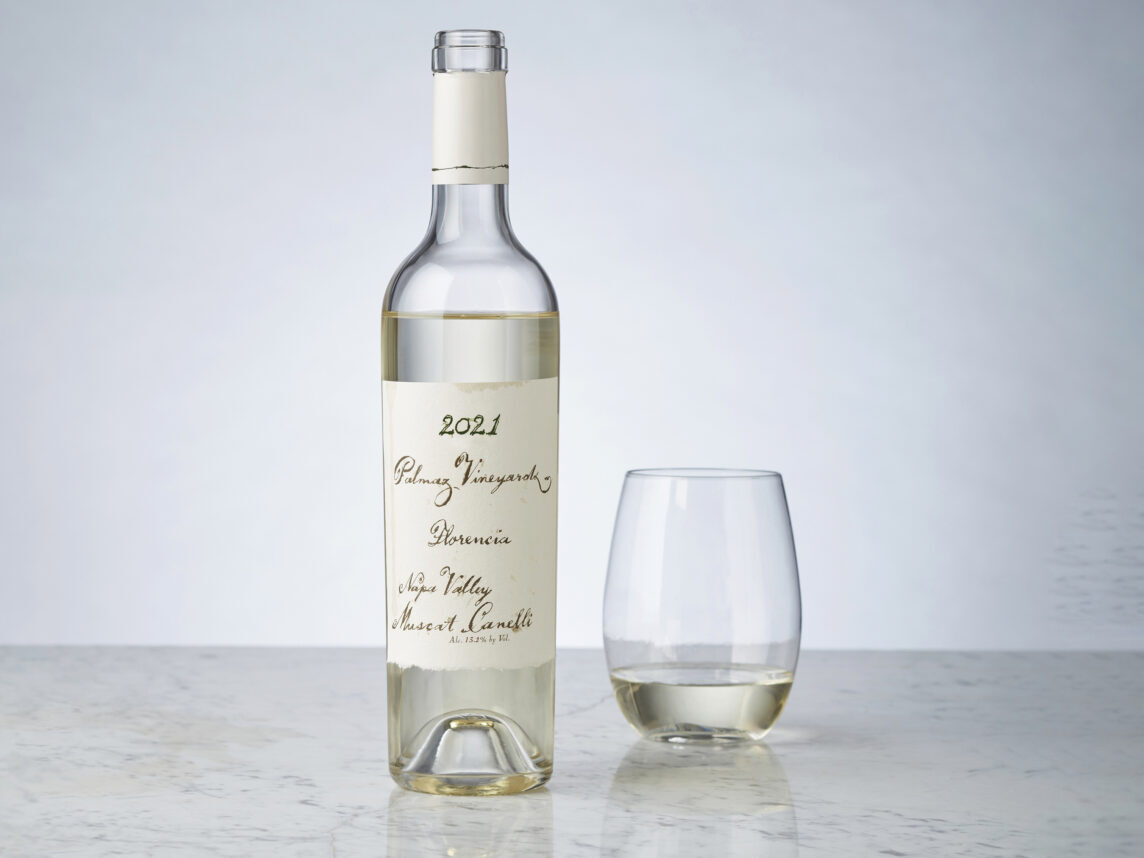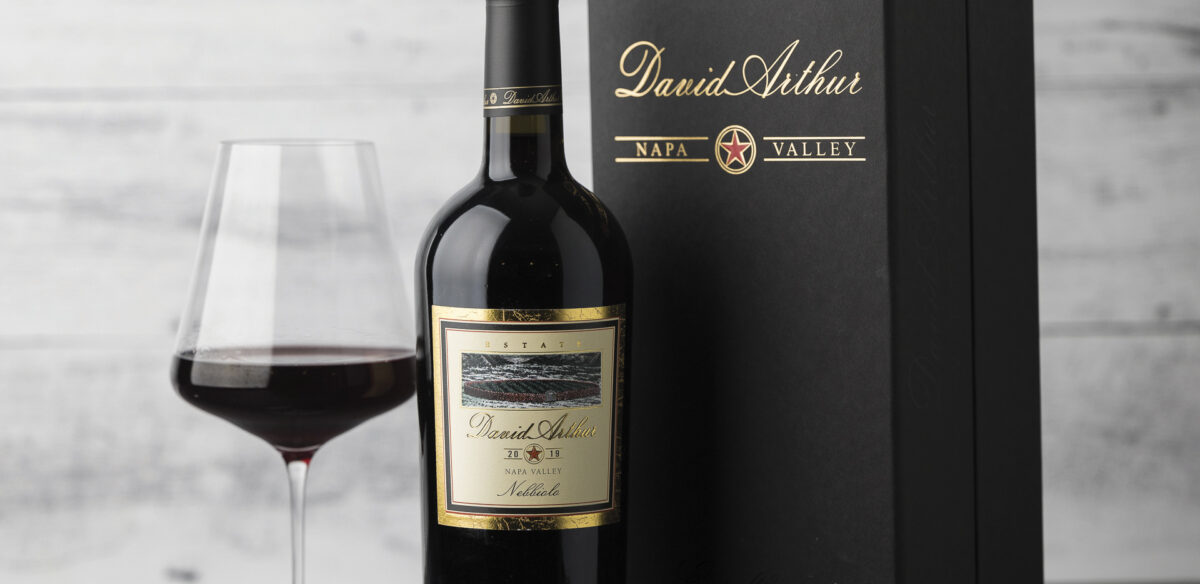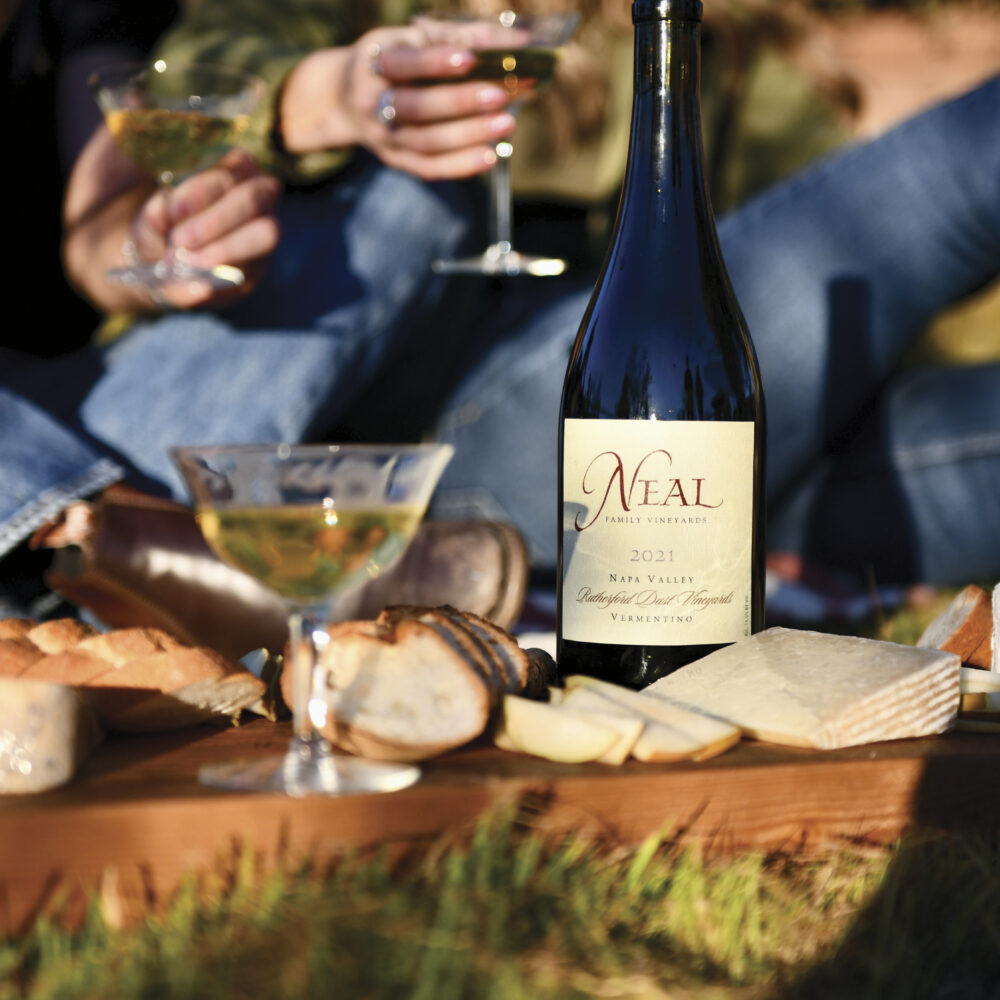From northern Piedmont’s Barolo to Tuscany’s Chianti Classico right down to Sardinia’s Vermentino, Italy is one of the most prolific winegrowing regions in the world with some 400 styles of native grapes (of 2000) used in commercial production. It’s no wonder, then, that some of those grapes found their way here to Napa Valley – Sangiovese, Muscat, and Vermentino, to name a few – as winemakers across the Valley now demonstrate quality over quantity when it comes to the Italian varieties in their portfolio.
Napa Valley’s history with Italian varieties dates back to the late 1880s when it is reputed that Sangiovese was first planted in Sonoma County, presumably by Italian immigrants. It wasn’t until a century later that these Italian varieties gained enough traction to stand out against the prolific Cabernet Sauvignon produced here. The 1980s saw a resurgence of Sangiovese after Piero Antinori, of the legendary Tuscan winemaking Antinori family, planted the thin-skinned grape at Antica Napa Valley in Napa. This paved the way for other Italian varieties as winemakers began experimenting and innovating with grapes outside their native land. Here are some of the most popular varieties still found in the Valley today.
 Sangiovese
Sangiovese
Sangiovese is arguably the most important grape in Italy, known for its role in Chianti, the designated red wine from the eponymous region in Tuscany, of which the wine must be produced with at least 70 percent of the grape. Outside of Chianti, the variety is just Sangiovese, bearing the name of the humble grape behind the liquid like many other common varieties. The grape requires fertile soils and hot, dry climates – just like Cabernet Sauvignon. So, for local producers wanting to make Sangiovese, it’s a gamble to overlook Napa Valley’s most prominent grape for a more niche style in this part of the world.
Most of the few Napa-based producers of Sangiovese do so in small parcels. 601 Cellars, a small, family-owned producer, makes less than 150 cases of 100 percent Sangiovese and Sangiovese Super Tuscan (80% Sangiovese, 8% Cabernet Sauvignon, and 12% Merlot) with grapes from the Pope Valley. The wine is handcrafted and aged two to three years in barrel, then at least one year in bottle. Gargiulo Vineyards also shines a spotlight on Sangiovese in the Valley with Aprile, their Super Tuscan from a majority of Sangiovese (usually around 94 percent), and the rest of Cabernet Sauvignon. Other noteworthy producers include Robert Biale Vineyards – Nonna’s Vineyard, Pestoni Family Estate, Villa Ragazzi, and Pure Cru – Sangio Vetta.
Nebbiolo
In Piedmont, Nebbiolo is renowned for its display in Barolo and Barbaresco, both bold, full-bodied ageable red wines with exceptionally powerful tannins. There can be some confusion around this grape as it is often compared to Pinot Noir, yet it produces wines of no similarity. The likeness comes from both grapes’ light color and paleness, finickiness to ripen, and ultimately being terroir-expressive in the final product of wine. In its native form, Nebbiolo tends to express notes of damp earth and forest floor, but in Napa, particularly at David Arthur Vineyards, one of the few vintners producing a Napa Nebbiolo, the wine showcases more dried fruit and baking spices. David Arthur describes his Nebbiolo as having “classic Old World characteristics with New World flair,” with the most recent vintage (2019) spending 30 months in French oak and then aging in the bottle for one year before release.
Round Pond Estate also creates a proprietary Nebbiolo and, more uniquely, a Rosato di Nebbiolo. The perfectly pink-hued wine is produced from Nebbiolo grapes specifically allocated for this rosé, with the grapes picked earlier (lower sugars) than those used in the 100 percent red.
 Sagrantino
Sagrantino
About 90 percent of this thick, dark-skinned grape grows in Central Italy’s Umbria, where its highest expression is showcased in the Montefalco Sagrantino DOCG wines. The wine is brooding with dark fruits of blackberry and cherry, spicy and earth characteristics, and high tannins – it’s often referred to as Italy’s most tannic variety, even above Nebbiolo.
With such a concentrated growing region, it’s quite special to have a presence of this variety in the Valley, only produced by Benessere Vineyards in St. Helena. The Italian-focused winery shares that Sagrantino is always among the last varieties to ripen. However, due to St. Helena’s moderate conditions, it consistently develops the desired flavors and tannin structure before being handpicked. Benessere uses French oak barrels for at least 18-month maturation before bottling without fining or filtration.
Vermentino
Moving onto white varieties, Vermentino is a primary grape of Sardinia; the late-ripening grape flourishes in its warm, dry climate but can also be found in pockets throughout Piedmont, Liguria, and Umbria. It might have previously been considered a wine geek’s favorite style with its intense nose of citrus fruit and herbs like thyme, but it’s found a modern audience for its fresh style that immediately transports imbibers to the Mediterranean. Vermentino isn’t as widespread in Napa, but Neal Family Vineyards has succeeded with the grape after planting it in 2019 in Rutherford. Proprietor and winemaker Mark Neal recognized the parallels in soils, terroir, and Mediterranean climate this AVA has with Vermentino’s favored Sardinia and now produces a round, medium-bodied wine with aromas of nectarine and notes of citrus and minerality on the palate.
Ribolla Gialla
Ribolla Gialla is an ancient grape from the Friuli region of Italy. The wine is light-bodied and primarily floral but balanced with citrus notes. It’s less popular to see Ribolla Gialla produced outside of Friuli and the bordering Slovenian vineyards. However, in Western Oak Knoll, Matthiasson Wines grows seven rows of Ribolla Gialla in their home vineyard. They originally grafted the variety onto 15-year-old Merlot vines when they purchased the property in 2006, and now they produce an elegant expression that tastes like hazelnuts and Meyer lemon that finishes with a stony minerality.
Muscat
One of the earlier Italian varieties to be introduced to Napa in the 19th century, Muscat, or Moscato as it’s called in Italy, is still here today. It is one of the oldest cultivated grape varieties, with some 200 geniuses worldwide. In Italy, Moscato is prevalent and shows versatility, used in Asti’s dry sparkling expressions, Tuscany’s Moscadello di Montalcino, and Puglia’s Moscato di Trani. The wines it produces are typically sweet and fruity but with low acidity. In Napa, Palmaz Vineyards began experimenting with Muscat in 2002, creating a Florencia Muscat wine every vintage. Their current release is 2021 and described as “sweet yet full of depth” with aromas of honeysuckle and ripe kumquats that open to bright fruit on the palate.




